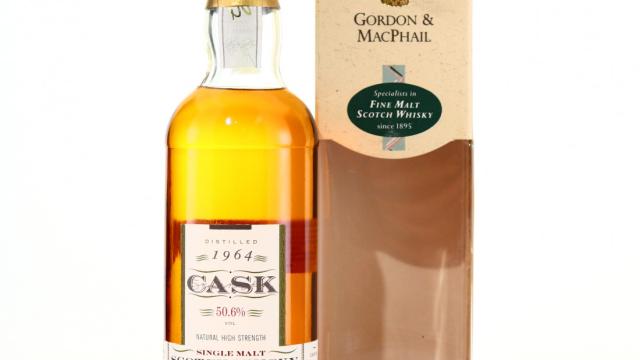
Discover and bid on old, rare and collectible whiskies in our online auctions each month.
You can place bids either under the lot image on the main auction page or on the right side of the individual lot page.
Placing a Maximum Bid
Use the "Set your bid limit" button on the left side of the bidding panel to enter the highest amount you're willing to bid on a lot. Our system will then automatically raise your bid in set increments if you’re outbid, up to your maximum. If someone bids above your set limit, we’ll notify you by email so you can choose whether to increase your bid.
Placing a Single Bid
Alternatively, place a single bid by selecting the button on the right side of the bidding panel. The button displays the amount needed for the next increment. For example, if the current highest bid is £50.00, the button will show "+ £55.00" (reflecting a £5.00 increment).
Incremental Bidding Explained
Our system increases bids based on preset increments, as shown in the table below, whether you set a maximum bid or make a single bid.
Discover and bid on old, rare and collectible whiskies in our online auctions each month.
Our global whisky auctions give your bottles the attention they deserve. Get started with a free valuation today.
Each month, we host whisky auctions featuring thousands of bottles from iconic whisky regions around the world.
Whether you're searching for old and rare Scotch whisky, legendary independent bottlings, exciting new world whiskies, or incredible single casks, our auctions are the perfect place to discover your next prized bottle.
Our global whisky auctions connect your bottles with passionate whisky enthusiasts worldwide. If you'd like to consign whisky for auction, simply complete our Seller Form today.
You will always be shown as an anonymous bidder when using Whisky Auctioneer.
When browsing the bidding history on a specific lot, the list of recent bidders is shown as 'anonymised bidders' with the exception of any bids placed through your account - which would appear as your username.
When logged into your account your bids are shown with your username, however, other users are not able to see this and you will appear as an 'anonymised bidder'.
User information/identity will never be revealed in the bidding process. We take user data and information protection very seriously at Whisky Auctioneer.
All the information you need to sell your whisky can be found in our Step-by-Step Guide to Selling Whisky at Auction which has been designed to guide newcomers through our easy and hassle-free service to get started selling whisky online.
Customers across the world can choose to sell their rum with Whisky Auctioneer. Our Client Service team will support sellers by providing valuations for their bottles and advice on the best way to get their whisky to us for sale into our auctions.
The bottles will be checked-in, authenticated, photographed, and then listed into the next available auction, or an auction of your choice, by our expert team. Whisky Auctioneer hosts monthly auctions, where registered users from across the globe can bid on bottles via our website.
After the auction closing date, the highest bidder will be notified by email. Payment is required within 72hrs. The buyer can then choose to ship, store, or collect the bottle(s). Buyer fees are applied during the online checkout process.
The seller will receive payment within 21 working days of the end of the auction, directly to their chosen bank account. Seller fees will be applied to the seller’s invoice after the auction.
Our monthly auctions feature the most comprehensive selection of old, rare and collectable whisky online. Whisky Auctioneer is the best choice to buy or sell whisky online at auction.